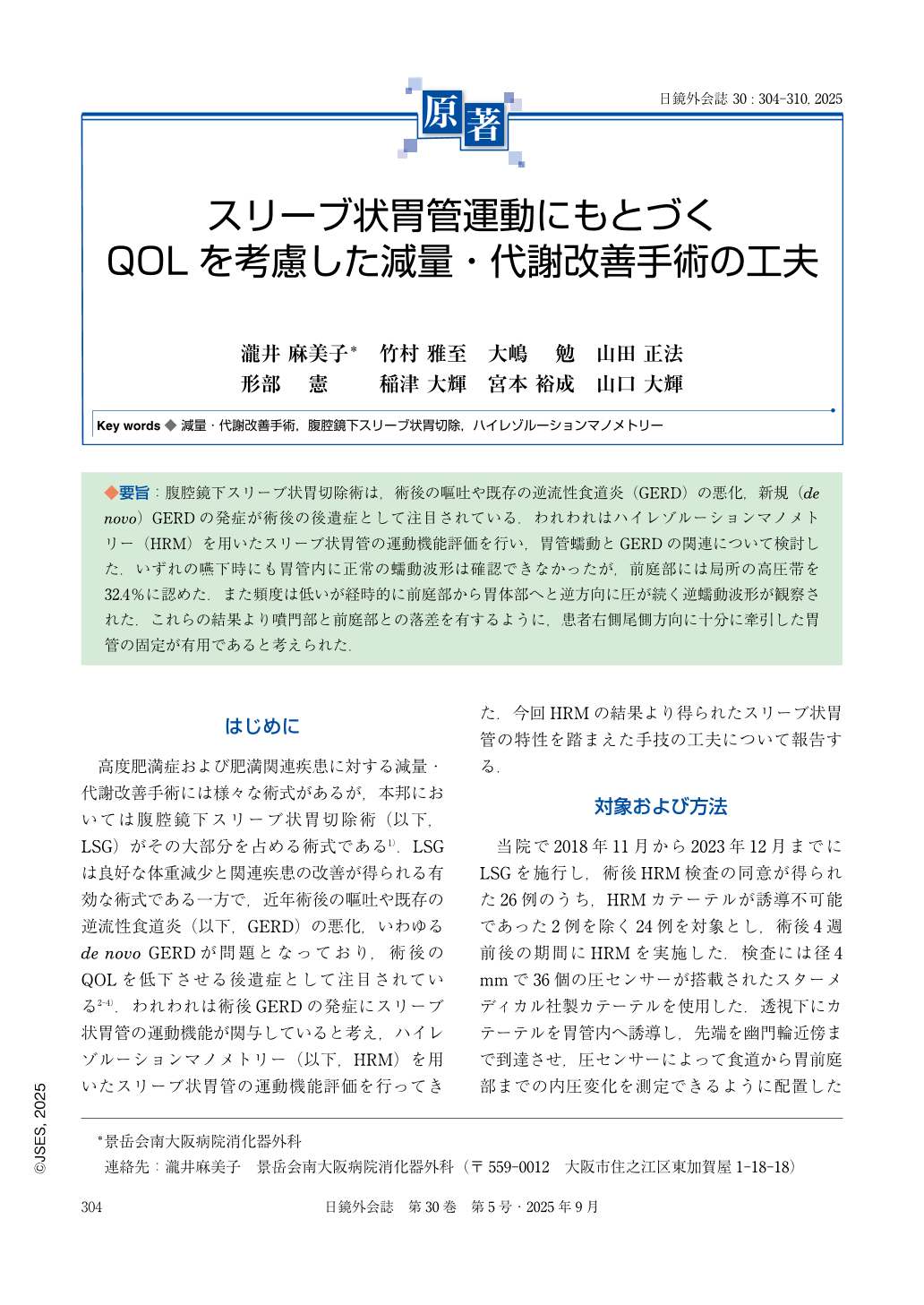Japanese
English
- 有料閲覧
- Abstract 文献概要
- 1ページ目 Look Inside
- 参考文献 Reference
◆要旨:腹腔鏡下スリーブ状胃切除術は,術後の嘔吐や既存の逆流性食道炎(GERD)の悪化,新規(de novo)GERDの発症が術後の後遺症として注目されている.われわれはハイレゾルーションマノメトリー(HRM)を用いたスリーブ状胃管の運動機能評価を行い,胃管蠕動とGERDの関連について検討した.いずれの嚥下時にも胃管内に正常の蠕動波形は確認できなかったが,前庭部には局所の高圧帯を32.4%に認めた.また頻度は低いが経時的に前庭部から胃体部へと逆方向に圧が続く逆蠕動波形が観察された.これらの結果より噴門部と前庭部との落差を有するように,患者右側尾側方向に十分に牽引した胃管の固定が有用であると考えられた.
Laparoscopic sleeve gastrectomy(LSG)can cause vomiting and aggravation of gastroesophageal reflux disease(GERD), consequently affecting the quality of life(QOL) of patients. We measured the intragastric motilities of the sleeve gastric tube using high-resolution manometry(HRM) which detects and visualizes intragastric pressure and peristalsis of the sleeve gastric tube. In this investigation, the absence of gastric body peristalsis was found after LSG. Furthermore, reverse peristalsis whose frequency was low, was observed from the pyloric antrum toward the stomach body. Hence, it is important to fix the sleeve gastric tube toward lower right in LSG because the difference between esophagogastric junction and antrum in height can prevent gastroesophageal reflux.

Copyright © 2025, JAPAN SOCIETY FOR ENDOSCOPIC SURGERY All rights reserved.


